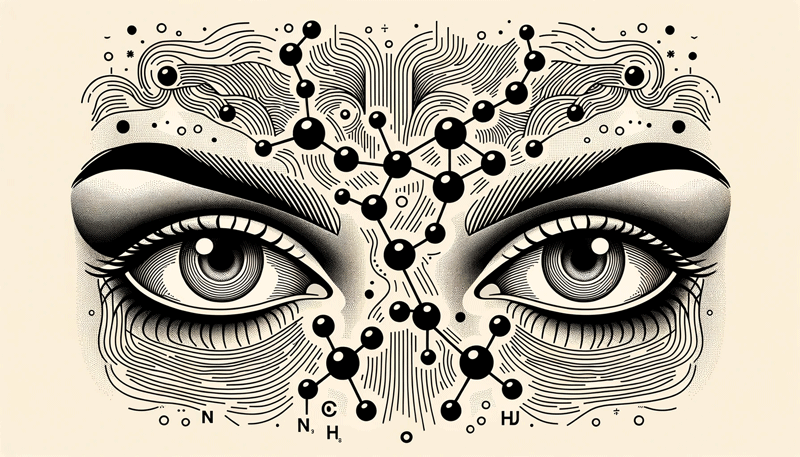If you constantly battle dark circles under your eyes no matter how much sleep you get or concealer you use, excess histamine could be the culprit.
Histamine is a chemical involved in immune responses, stomach acid acid secretion, and regulating wakefulness. It also helps control our menstrual cycles, ovulation, and oestrogen levels.
Excess histamine can cause dark circles under the eyes by:
- Vasodilation – histamine relaxes blood vessels, causing them to widen (vasodilate). This allows more blood to pool under the thin skin below the eyes, creating a darkened, puffy appearance.
- Increased permeability – histamine makes blood vessel walls more permeable so immune cells can pass through and reach tissues. But this also allows fluid leakage into surrounding areas, leading to swelling.
- Mast cell activation – Mast cells release histamine when triggered. Mast cells are a type of immune cell found in tissues throughout the body. They contain granules rich in histamine and other inflammatory mediators. When mast cells detect an allergen or stress trigger, they release these granules leading to widespread inflammation. Too much histamine from activated mast cells promotes inflammation under the eyes. This can damage the thin collagen layers, thinning the skin and revealing underlying blood vessels as dark circles.
- Insomnia – by regulating wakefulness, high histamine can cause sleep disruption. Lack of quality sleep deprives the under eye area of essential rejuvenation time. Blood vessels dilate from fatigue.
But having too much histamine can cause a long list of issues. Here are some of the most common high histamine associated symptoms experienced by women:
- Irregular periods
- Heavy periods
- Headaches and migraines
- Anxiety or irritability, especially at ovulation
- Fatigue and insomnia
- Bloating and constipation
- Weight gain
- Skin irritation and eczema
What causes high histamine? Common triggers include food allergies/sensitivities, an imbalance in gut bacteria, hormonal imbalances, and high stress levels. Medications like over the counter painkillers and antibiotics also raise histamine.
Persistent dark under eye circles may be just one manifestation of histamine intolerance. Checking for other high histamine signs can clue you in.


























